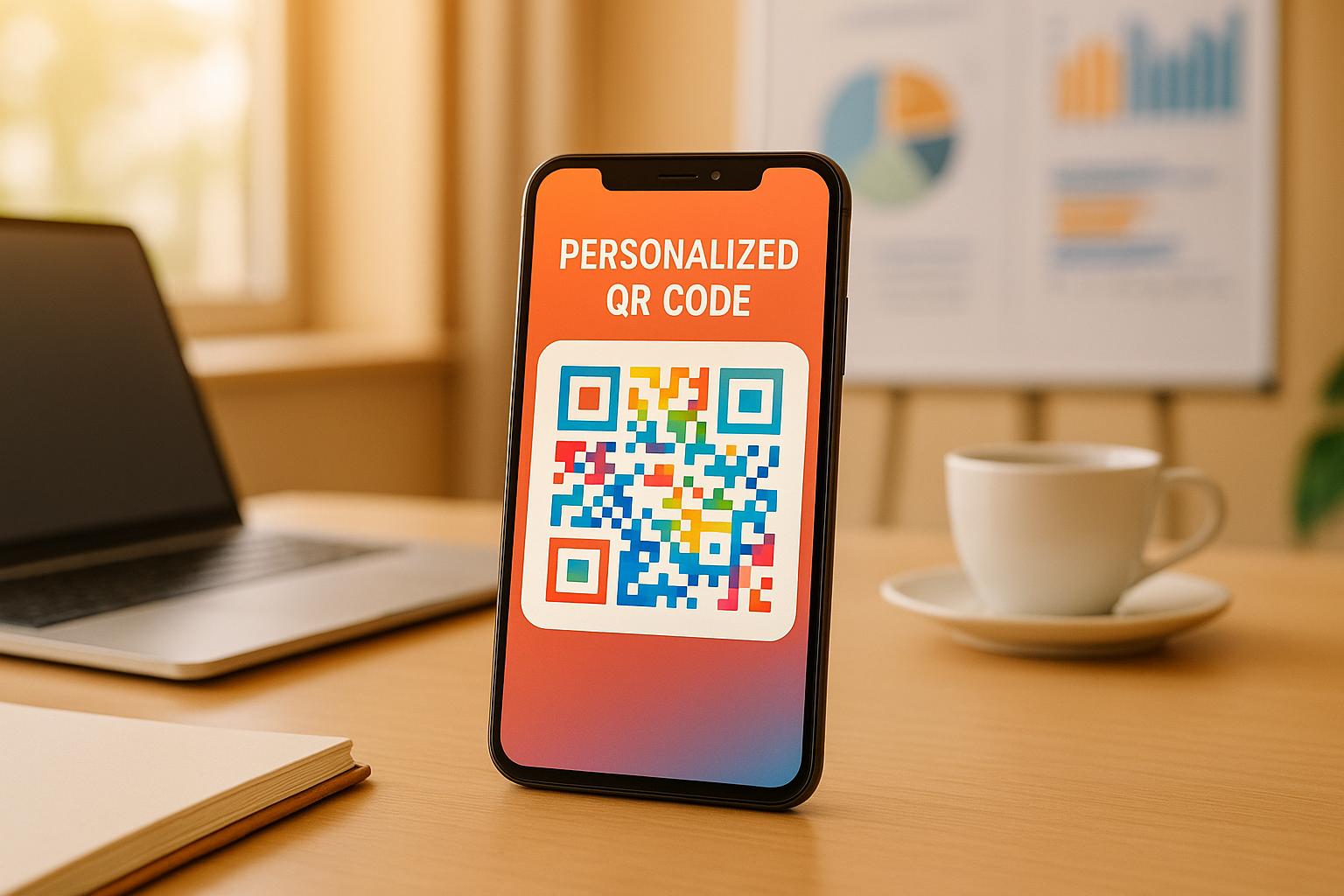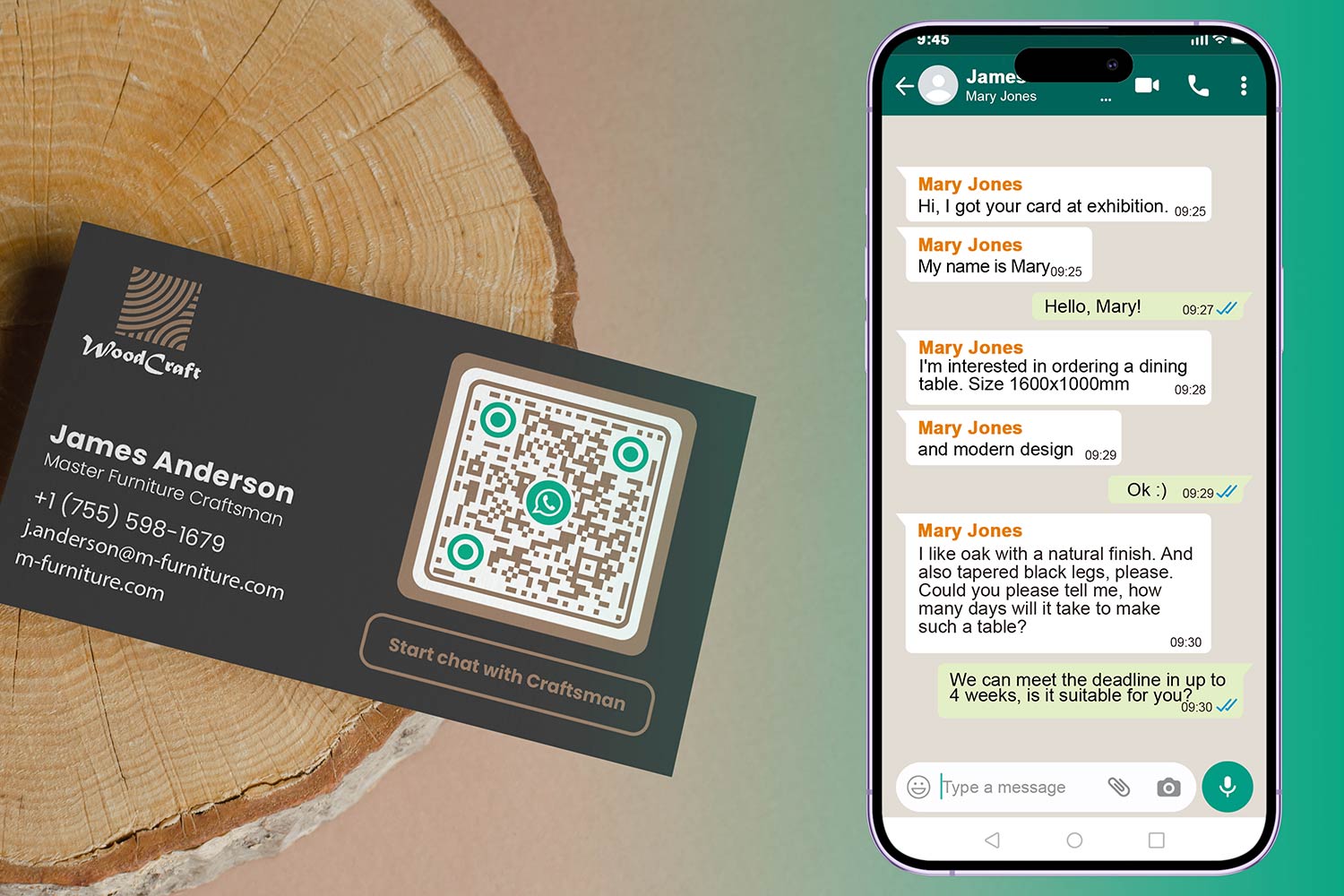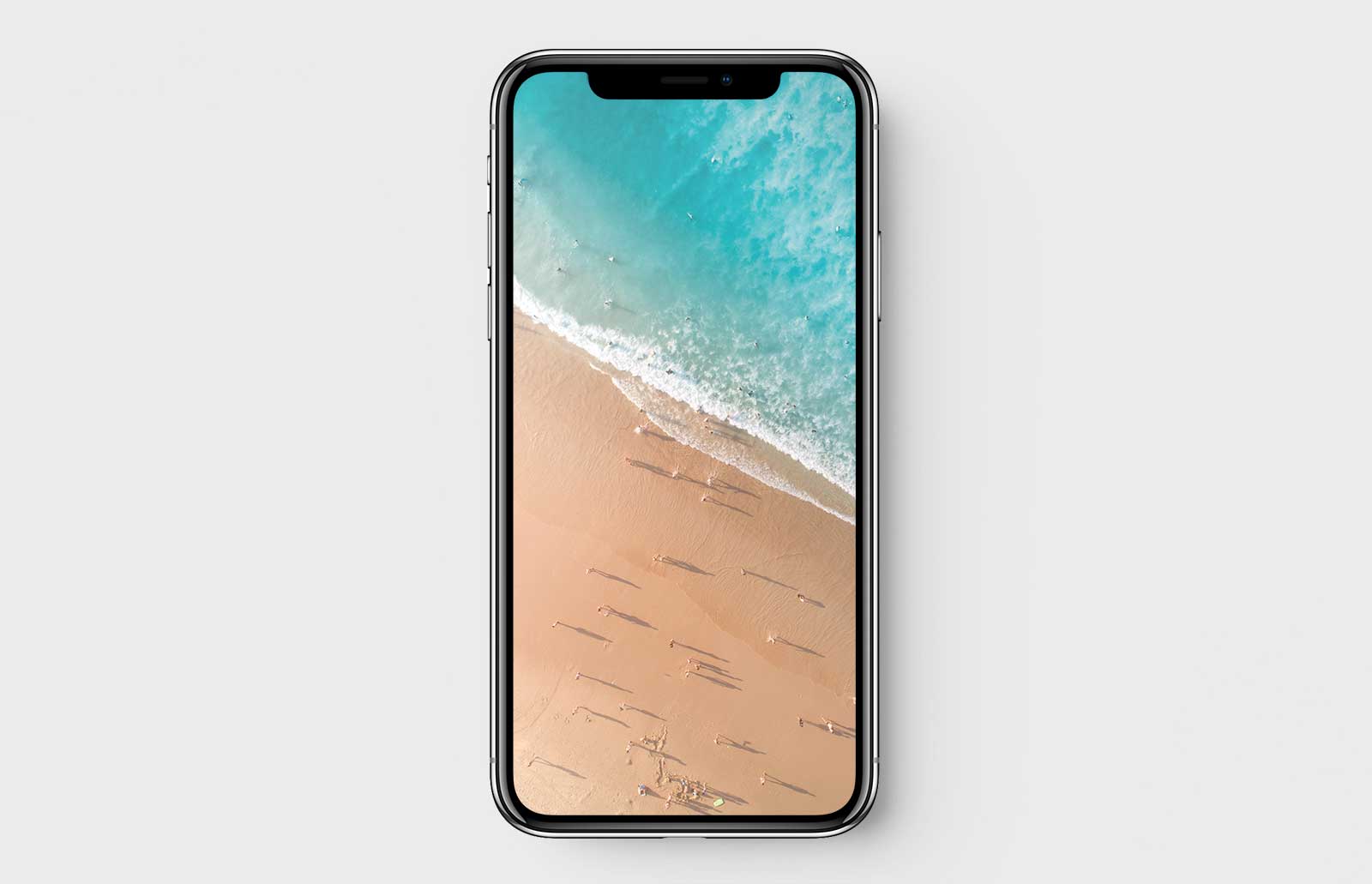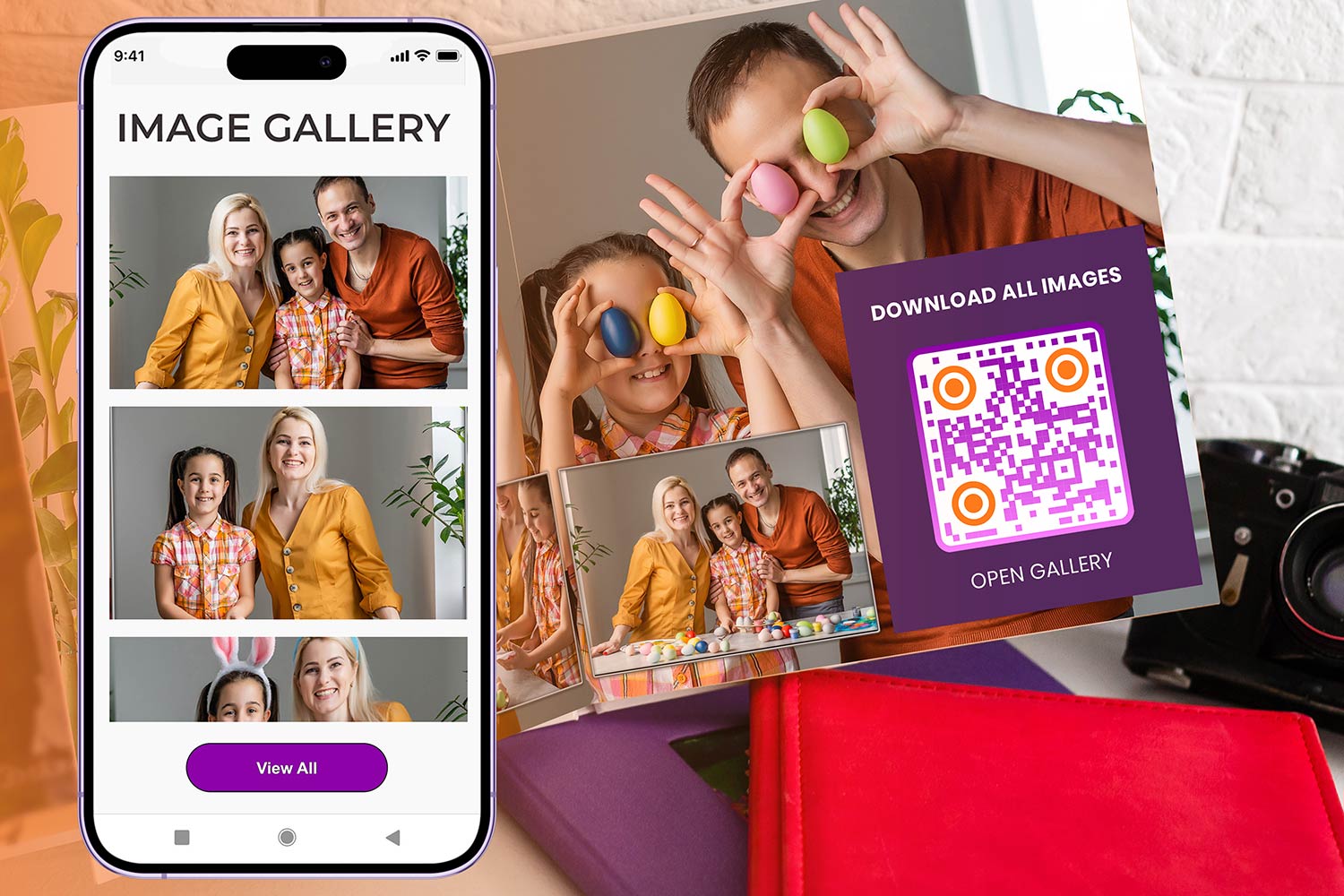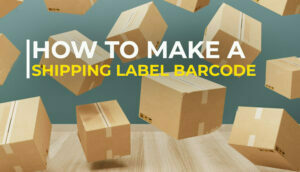QR codes have transformed marketing by connecting offline and online experiences, offering tailored, real-time interactions. Here’s what you need to know:
- Why It Matters: QR codes are no longer generic tools. Dynamic and personalized QR codes let brands deliver content based on user behavior, location, or timing.
- Key Trends:
- QR code scans surged 433% in two years, hitting 26.95 million in 2023.
- 95% of businesses report QR codes help collect valuable first-party data.
- Branded QR codes increase engagement by up to 80%.
- Dynamic Codes vs. Static Codes:
- Static codes are fixed and unchangeable.
- Dynamic codes allow updates, detailed tracking, and tailored campaigns.
- Use Cases: Retail, CPG, healthcare, real estate, and more are using QR codes for payments, loyalty programs, and personalized customer experiences.
- Analytics & Automation: Tracking scans, locations, and user behavior helps refine campaigns. Automation tools like HubSpot and Zapier enhance engagement.
- Security: Custom branding, HTTPS links, and dynamic updates ensure safe and trustworthy QR campaigns.
QR codes are a must-have for modern marketing. They offer flexibility, personalization, and data-driven insights to create engaging customer experiences.
New Use Cases for Direct Mail: Personalized QR Codes, Direct Mail Match Back, PURLs, & More!
QR Code Customization Options
Customizing QR codes is no longer just an option – it’s a must for creating the personalized experiences that modern marketing demands. Gone are the days of plain black-and-white QR codes. Today’s designs, tailored to reflect your brand, can increase effectiveness by up to 80%, building trust and making users feel secure when scanning unfamiliar codes.
This enhanced visual appeal helps eliminate the hesitation many people feel toward generic QR codes, especially when security concerns are top of mind.
Why Custom Branding Matters for QR Codes
Trust plays a huge role in whether someone decides to scan a QR code. A branded QR code, featuring familiar logos, colors, or designs, reassures users about its authenticity. It’s a simple way to let people know who they’re engaging with before they even scan. This kind of transparency reduces the reluctance associated with unknown codes.
Take the example of the Ad Council and the American Lung Association. They launched a campaign using branded, interactive QR codes and saw a 33.5% increase in brand engagement compared to campaigns with generic codes. That’s the power of making your QR codes feel like an extension of your brand.
Pairing clear calls-to-action (CTAs) with custom branding can amplify this effect. Instead of leaving users guessing, phrases like “Scan to get 10% off” or “Scan to view menu” set clear expectations. This combination of recognizable design and actionable messaging can significantly boost scan rates.
Branded QR codes also shine across various touchpoints. For instance, a restaurant can use them on table menus to create a cohesive dining experience. Similarly, an e-commerce business can maintain consistent branding from its website to its packaging by designing QR codes that match its overall aesthetic.
Tools for Creating Custom QR Codes
Modern QR code platforms make customization easier than ever with drag-and-drop editors and professional templates. When selecting a platform, look for one that offers robust customization options. Features like adding your logo, adjusting colors to match your brand palette, and choosing from various templates can transform a simple code into a powerful branding tool.
For example, Pageloot provides an intuitive interface for creating fully branded QR codes. You can upload your logo, pick colors that align with your brand guidelines, and choose from professionally designed templates – all while ensuring your QR code remains scannable across different devices. This balance between aesthetics and functionality is crucial. Over-customizing with excessive design elements can make codes harder to scan, so it’s important to maintain proper contrast and test the codes on multiple devices before launching.
Key features to prioritize include:
- Logo integration: Add your logo to make the QR code instantly recognizable.
- Color customization: Match the code’s colors to your brand palette.
- Template selection: Use pre-designed templates for a polished look.
- Frames or borders: Add a finishing touch while keeping the design functional.
For businesses running campaigns across different locations or platforms, using a QR code generator with logo ensures consistency. Whether it’s for business cards, flyers, or product packaging, having a cohesive design strengthens your brand identity.
Investing in the right tools for customization pays off. When your QR codes align with the professionalism of your other marketing materials, they become seamless extensions of your brand. This not only boosts engagement rates but also reinforces brand recognition, setting the stage for more dynamic campaigns, which we’ll explore next.
Dynamic QR Codes for Flexible Marketing
Dynamic QR codes bring a level of flexibility to marketing that static codes simply can’t match. These smart codes allow real-time updates to campaigns without requiring costly reprints. Acting as adaptable gateways, they can redirect users to different destinations, making them a powerful tool for personalized marketing efforts.
Benefits of Using Dynamic QR Codes
Dynamic QR codes excel at delivering tailored content through intelligent targeting. For instance, they can use geographic data to show location-specific content, creating a more localized experience for users. Considering that over 90% of marketers believe location-based marketing is crucial for boosting sales, these codes address a key need in today’s campaigns.
One standout advantage is the ability to optimize campaigns in real time. Businesses can update linked content instantly and experiment with A/B testing for various elements like location-based messaging, visuals, and calls to action. This flexibility ensures campaigns stay relevant and effective.
Personalization is another core strength of dynamic QR codes. With 39% of customers expecting tailored QR code content, these codes can adapt to several factors, such as:
- Location-based targeting: Highlight store-specific inventory or promotions.
- Time-sensitive offers: Show different deals during peak versus off-peak hours.
- Device optimization: Provide mobile-friendly or desktop-specific experiences.
- Campaign variations: Test and refine messaging for better results.
A great example of this in action is Audi of America’s June 2025 CTV/OTT campaign. By using dynamic QR codes tailored to users’ locations and time zones, the campaign hit a 93% video completion rate and added over 23,000 minutes of brand engagement.
Creating Dynamic QR Codes with Pageloot

Pageloot makes creating and managing dynamic QR codes straightforward. The process involves signing up for a free trial, entering your desired content, customizing the design to align with your brand, generating the code, testing it across devices, and downloading it for use. What’s more, you can update the code’s destination even after printing, adding long-term value.
Pageloot also provides detailed tracking and analytics, enabling businesses to monitor performance and make informed adjustments. Restaurant owner Hugo Laurent shared his experience:
"The most easy and reliable QR code Generator ever. PDF files can be uploaded instantly. Our restaurant menus are now digital".
For industries like restaurants or real estate, where frequent updates are common, this ability to edit content without reprinting saves time and money. You can easily create a QR code for your next campaign using Pageloot’s free QR generator.
The platform’s mobile-friendly features also make it convenient to manage campaigns on the go. A print and design studio noted that vector formats, customizable QR frames, and smartphone management tools helped increase scan rates.
Static vs Dynamic QR Codes Comparison
Choosing between static and dynamic QR codes depends on your marketing needs. Here’s a side-by-side comparison:
| Feature | Static QR Codes | Dynamic QR Codes |
|---|---|---|
| Content editing | Fixed after creation | Editable post-print |
| Analytics | No tracking | Detailed scan data |
| Cost | Free | Subscription after trial |
| Campaign flexibility | Single destination | Multiple destinations, A/B testing |
| Personalization | Generic content | Location, time, device-based customization |
| Use cases | Simple links | Complex and evolving campaigns |
Static QR codes are ideal for unchanging information, like product labels or business cards. On the other hand, dynamic QR codes shine in active marketing campaigns that require frequent updates and personalization. For example, prompts asking users to share their location in exchange for viewing in-stock items often outperform generic calls to action.
Dynamic QR codes are especially useful for marketing agencies juggling multiple client campaigns or e-commerce businesses looking to stay agile without incurring high reprinting costs. Coupled with real-time analytics, they allow for smarter, data-driven marketing strategies. Integrating these codes with broader automation tools can further enhance their impact, making them a cornerstone of modern marketing.
QR Code Analytics and Marketing Automation
QR codes have evolved far beyond being simple scannable tools. When paired with analytics and automation, they become powerful drivers of personalized engagement. With 51% of businesses actively seeking better tracking features in their QR platforms, it’s clear that data-driven QR code campaigns are in high demand.
Tracking QR Code Campaign Performance
To measure the success of a QR code campaign, you need to dive into metrics that reveal user behavior and engagement patterns.
Some of the most important metrics to track include total scans, which measure overall reach, and unique scans, which show how many individual users engaged with your code. Geographic data helps pinpoint areas of interest, while device and operating system tracking can guide campaign optimization. Metrics like session duration and bounce rates provide insights into how relevant and engaging your content is.
| QR Code Metrics | Explanation | What It Tells You |
|---|---|---|
| Number of scans | Total scans of the QR code | Campaign’s overall reach and popularity |
| Unique scans | Number of unique devices scanning the code | Reach to individual users |
| Scan location | Geographic data on where scans occurred | Regional interest and user demographics |
| Device type | Types of devices used (phones, desktops, tablets) | User preferences and device optimization |
| Operating system | OS used by scanning devices (Android, iOS, etc.) | Device-specific trends |
| Session duration | Time users spend on the landing page after scanning | Content engagement and relevance |
| Bounce rate | Percentage of users leaving after one page | Content relevance (higher rates suggest issues) |
| Pages per session | Average number of pages viewed | Navigation efficiency and engagement levels |
| Conversions | Actions like purchases or sign-ups after scanning | Campaign success and ROI |
| Revenue | Total revenue generated from QR code usage | Financial impact of the campaign |
Time-based analytics can also reveal when your audience is most active, helping you schedule campaigns for maximum engagement. On average, QR code campaigns achieve a click-through rate of 12.80%, offering a solid benchmark for performance.
A standout example comes from West Zebra, a digital advertising agency, which collaborated with AgrioFresh, a Romanian food company. By placing QR codes on salad bags and fruit boxes, they encouraged shoppers to enter a contest. The result? A 48% marketing opt-in rate – far surpassing the industry average of 34%. The campaign utilized tools like HubSpot, Forms for Make, and Make.com to manage the process.
These insights naturally lead to the next step: integrating automation tools to maximize the value of collected data.
QR Code Integration with Automation Platforms
Once performance metrics are tracked, automation can turn those insights into ongoing, personalized engagement. Marketing automation has been shown to boost sales productivity by 14.2%. For example, when a user scans a QR code, automated workflows can deliver tailored content, collect lead details, and even initiate follow-ups based on their behavior.
Platforms like Zapier and HubSpot make it easy to connect QR code scans to CRM systems, email marketing tools, and other workflows. With 54% of consumers having scanned a marketing-related QR code and 75% of Americans planning to use QR codes in the future, the potential for automation is enormous.
"Statistics show that buyers don’t do that. They want to learn at their own pace and be reached when they need more information or are ready to buy. A well-constructed marketing automation strategy makes that a reality." – John McTigue, Marketing Expert
Dynamic QR codes add another layer of functionality by enabling real-time updates and tracking. Businesses can trigger different automation sequences based on factors like scan location, time, or device type, creating highly tailored user experiences.
For marketing agencies managing campaigns across various industries, this integration allows for sophisticated strategies. Whether QR codes are placed on business cards or flyers, the automation potential remains consistent.
Using Pageloot’s Analytics Dashboard
Pageloot’s analytics dashboard simplifies QR code campaign optimization by offering real-time insights. The platform tracks essential metrics and provides tools for quick, informed decision-making.
Key features include scan tracking over different time periods, geographic heat maps to show where scans are happening, and device breakdowns to highlight user preferences. Conversion tracking is also integrated, allowing businesses to measure the direct revenue impact of their QR code campaigns.
The dashboard is mobile-friendly, enabling users to monitor performance on the go. Customizable reports make it easy to analyze data and share insights with teams. Plus, Pageloot integrates with Google Analytics for even deeper analysis.
This centralized approach is particularly valuable for businesses using QR codes across multiple touchpoints, such as product labels or restaurant menus. By consolidating performance data, marketers can identify which placements and strategies yield the best results.
With global QR code transaction values expected to hit $3 trillion by 2025, having a robust analytics and automation setup is no longer optional – it’s a necessity. These tools empower businesses to create more personalized and effective marketing strategies, ensuring they remain competitive in an ever-evolving digital landscape.
sbb-itb-74874c9
Popular QR Code Personalization Use Cases
As businesses embrace personalized QR code marketing, they’re finding creative ways to enhance customer experiences across various industries. With 73% of consumers preferring to shop through multiple channels, QR codes are becoming a key tool for creating smooth omnichannel interactions. Let’s dive into some of the ways QR codes are reshaping customer engagement and building loyalty.
Contactless Payments and Customer Loyalty
The growing demand for contactless interactions has made QR codes an essential part of payment systems and loyalty programs. Starbucks has been leading the charge since 2011, incorporating QR codes into its mobile app for seamless payments and embedding them in promotional campaigns to drive loyalty and special offers. Similarly, McDonald’s uses QR codes for contactless ordering and payments, allowing customers to skip physical contact altogether. These codes simplify both transactions and rewards, making the process more efficient.
QR code–enabled loyalty programs also give businesses access to purchase histories, allowing them to offer personalized rewards that resonate with their customers. If you’re considering a similar approach, you can create a QR code that connects directly to your loyalty program signup or payment portal, making the customer journey as smooth as possible.
QR Codes on Packaging and Digital Channels
QR codes are also transforming how customers engage with products, both on packaging and through digital platforms. For instance, product packaging now serves as a creative space for personalized QR code experiences. Hershey’s 2024 holiday campaign featured dual QR codes on Kisses packaging – one for recording a message and another for playing it back. Coca-Cola’s "Share a Song" campaign paired QR codes with song lyrics on its packaging, allowing users to scan and watch animated lyric clips, sparking conversations and fostering connections.
Blue Apron includes QR codes on its delivered items, giving customers access to recycling guides, store locators, and downloadable content. E-commerce brands can take a similar approach by adding QR codes to product labels that link to useful content like assembly instructions, warranty details, or recommendations for complementary products.
IKEA has also leaned into QR codes to solve customer pain points. Its mobile checkout system lets shoppers scan items and complete their purchases – no need to wait in long lines.
Industry-Specific QR Code Examples
Different industries are finding unique ways to use QR codes to address their specific challenges. Nike, for example, worked with WeChat to create custom QR codes that enable personalized shoe designs and provide insights into design trends. Tesco’s virtual stores in South Korea allow busy shoppers to scan QR codes to buy products on the go, saving time and catering to local shopping habits.
In the real estate industry, QR codes are becoming a game-changer. Agents use them on property signs and marketing materials to offer instant access to virtual tours, detailed property information, and scheduling tools. With the global real estate market valued at $7.06 billion and projected to hit $7.95 billion by 2028, these personalized experiences help agents stand out in a crowded market.
Healthcare organizations are also getting creative with QR codes, using them for patient check-ins, medication details, and appointment scheduling. This not only reduces wait times but also provides patients with tailored health resources. Meanwhile, educational institutions are using QR codes to enhance learning. Students can scan codes for access to supplementary materials or interactive lessons that they can explore at their own pace.
QR codes are proving to be a flexible and impactful tool for creating meaningful connections with customers across various touchpoints. In fact, 93% of retail leaders believe that delivering these personalized experiences is crucial for success.
QR Code Security and Trust Practices
With the growing use of dynamic QR codes and their ability to provide real-time tracking, ensuring the security and trustworthiness of these campaigns has become more important than ever. As cybersecurity threats continue to rise, safeguarding QR code campaigns is essential – not just for user safety but also for meeting regulatory standards.
Best Practices for Secure QR Campaigns
Running a secure QR code campaign starts with identifying potential risks and taking steps to address them. One of the first priorities is verifying the destination URL. Always ensure that URLs linked to QR codes are secure, legitimate, and lead users to trusted websites. Using HTTPS for all landing pages is non-negotiable, as it adds a critical layer of security and avoids directing users to questionable or unsecured links.
Another key measure is data encryption, especially when collecting user information through QR codes. Encrypting data transmissions and minimizing the collection of personal information can significantly reduce the risk of breaches.
Transparency is equally important. Users should clearly understand how their data will be used before scanning a QR code. Providing clear privacy policies, opt-in consent options, and easy access to privacy details on the landing page helps build trust and ensures compliance with data protection standards.
To further enhance security, custom branding can make a difference. Including your logo and brand colors on QR codes not only boosts recognition but also reassures users that the code is authentic. In fact, studies show that customized QR codes engage users and build trust more effectively than generic black-and-white ones – by as much as 80%.
For QR codes displayed in public spaces, physical security measures are essential. Use tamper-evident materials and regularly inspect the placement of codes to prevent malicious replacements. Educating both staff and customers about verifying QR code sources before scanning adds another layer of protection.
Real-time monitoring is another vital tool for maintaining security. By tracking scan behavior – such as locations, times, and device types – marketers can quickly identify unusual activity. If something seems off, having the ability to deactivate or redirect codes immediately can prevent potential issues from escalating.
Dynamic QR codes offer added flexibility and security compared to static ones. They allow for instant updates or deactivation without requiring new physical materials. This feature is especially useful in industries like healthcare, where maintaining security and compliance is critical.
Pageloot integrates these best practices into its platform, making it easier for businesses to ensure secure and trustworthy QR code campaigns.
Pageloot’s Security Features
Pageloot takes QR code security to the next level with a range of features designed to meet the needs of businesses in regulated industries and those with strict data protection requirements. The platform’s real-time analytics enable marketers to monitor scan activity and flag unusual patterns that could indicate security threats.
With dynamic QR code capabilities, Pageloot allows marketers to update or deactivate destination URLs instantly. This ensures that if a code is compromised, it can quickly be redirected to a safe page or disabled altogether – without the hassle of reprinting materials.
Pageloot also ensures compliance with data privacy regulations, including GDPR and CCPA. The platform offers secure data storage, access controls, and audit trails, making it easier for businesses to run campaigns while meeting legal obligations.
For organizations handling sensitive information, such as healthcare providers or educational institutions, Pageloot provides additional features like password protection and advanced access controls. These tools help safeguard patient or student data and keep it out of the wrong hands.
The platform’s branded QR code options further enhance trust by allowing businesses to create codes that prominently display their logos and brand colors. This visual authentication reassures users and reduces the risk of falling victim to scams.
Pageloot also offers secure hosting for QR code destinations, ensuring that landing pages remain protected and operational. Combined with real-time monitoring, businesses can maintain full visibility over their campaigns and respond quickly to any security concerns.
If a QR code is compromised, Pageloot’s dynamic codes make it easy to take action. Marketers can deactivate affected codes, update destinations, and analyze scan data to assess the situation – all from a centralized dashboard that simplifies campaign management and oversight.
Conclusion
QR code marketing has come a long way, evolving from simple scannable links into tools that deliver personalized and interactive experiences. With dynamic QR codes offering customization options and detailed analytics, marketers now have powerful ways to engage their audience and track campaign performance with precision. These advancements build on the core benefits discussed earlier.
When brands like Guinness and Mercedes use personalized, interactive QR code experiences, they highlight how creative applications can grab attention and foster meaningful connections.
Key Takeaways for Marketers
To succeed with modern QR code campaigns, focus on enhancing user experience and achieving measurable results. The most effective strategies combine visual branding with dynamic features, enabling marketers to adapt campaigns on the fly based on performance data.
Branded QR codes not only boost recognition but also build trust, a recurring theme throughout this guide. Unlike static codes, dynamic QR codes allow for instant updates, detailed tracking, and seamless redirection – without the need to reprint materials.
Analytics are the backbone of optimization. Successful campaigns go beyond tracking scan counts; they also analyze location data, device types, and user behavior. This information helps marketers fine-tune their targeting, refine placement strategies, and improve conversion rates over time.
Integrating QR codes with marketing automation platforms opens doors to advanced lead nurturing and customer journey mapping. Paired with CRM systems, QR code interactions can trigger personalized follow-ups and provide actionable insights into customer preferences. These principles echo the strategies discussed in earlier sections.
Getting Started with QR Code Marketing
If you’re ready to dive into QR code marketing, start by balancing small-scale testing with long-term scalability. Define clear goals for your campaign – whether it’s boosting social media followers, growing email lists, or driving product sales – and make sure your QR codes provide real value to users.
Begin with free tools to test your ideas and measure audience response. For example, Pageloot’s free QR code generator is a great way to create static codes for initial experiments. This lets you validate your approach before committing to premium features.
For your first campaigns, focus on the basics:
- Ensure QR codes are properly sized.
- Test scanning across different devices.
- Create mobile-friendly landing pages.
- Use clear calls-to-action like "Scan to Win a Voucher!" or "Scan for Exclusive Offers" to encourage engagement.
Before launching, double-check that links work, test scan functionality from various distances, and ensure a smooth user journey from scan to conversion. This attention to detail can help avoid costly errors and improve user satisfaction.
As your campaigns grow, consider upgrading to dynamic QR codes for more advanced features. These allow for real-time updates, detailed analytics, and the flexibility to change destinations without reprinting materials. Dynamic QR codes can significantly enhance your strategy, as shown in earlier examples.
Keep a close eye on scan locations, peak activity times, and device preferences to refine your approach. Use this data to improve placement, adjust campaign timing, and create more personalized experiences for different audience segments.
The success of campaigns like Verizon‘s partnership with ScanLife – which generated over 150,000 scans in just three months through print ads and in-store displays – shows the incredible potential of well-executed QR code strategies with proper tracking and optimization.
FAQs
How can dynamic QR codes improve personalization in marketing campaigns?
Dynamic QR codes have revolutionized personalized marketing. Unlike their static counterparts, these codes allow you to update the linked content instantly, without the hassle of reprinting. This means you can adjust the experience on the fly, tailoring it to factors like user behavior, location, or specific campaign objectives. The result? A more engaging and relevant interaction for your audience.
What makes dynamic QR codes even more valuable is their ability to provide in-depth analytics. Marketers can track details such as when the code was scanned, where it happened, and the type of device used. These insights offer a clearer picture of audience behavior, enabling smarter, more targeted campaign strategies. With their adaptability and data-driven edge, dynamic QR codes are a must-have for creating marketing experiences that truly connect.
How can QR codes be effectively integrated into marketing automation platforms?
To make the most of QR codes in your marketing automation platform, start by ensuring they’re mobile-friendly and simple to scan. This makes it easier for users to engage with your content. Connect these QR codes to your CRM system to enable personalized interactions and automate tasks like sending tailored emails or tracking how customers interact with your brand.
Take it a step further by creating custom-branded QR codes that feature your logo and brand colors. This not only reinforces your brand identity but also keeps the codes visually appealing and easy to notice. Just make sure there’s enough contrast to ensure they’re scannable. Also, don’t forget to use analytics tools to monitor key metrics like scan rates and user behavior. These insights can help you fine-tune your campaigns for better results.
Dynamic QR codes are a smart choice, too. They let you update the linked content without needing to reprint the codes, giving you more flexibility while saving on costs.
How can businesses keep their QR code campaigns secure and protect user data?
To ensure the security of QR code campaigns and protect user data, businesses should opt for dynamic QR codes that include features like encryption and access controls. These measures help shield sensitive information and minimize the chances of unauthorized access.
It’s also important to link all QR codes to HTTPS-enabled URLs to guarantee secure data transmission. Regularly updating the content tied to your QR codes and responsibly monitoring analytics can further enhance security while fostering trust with users. Clearly communicating your privacy policies shows your dedication to safeguarding customer information.

